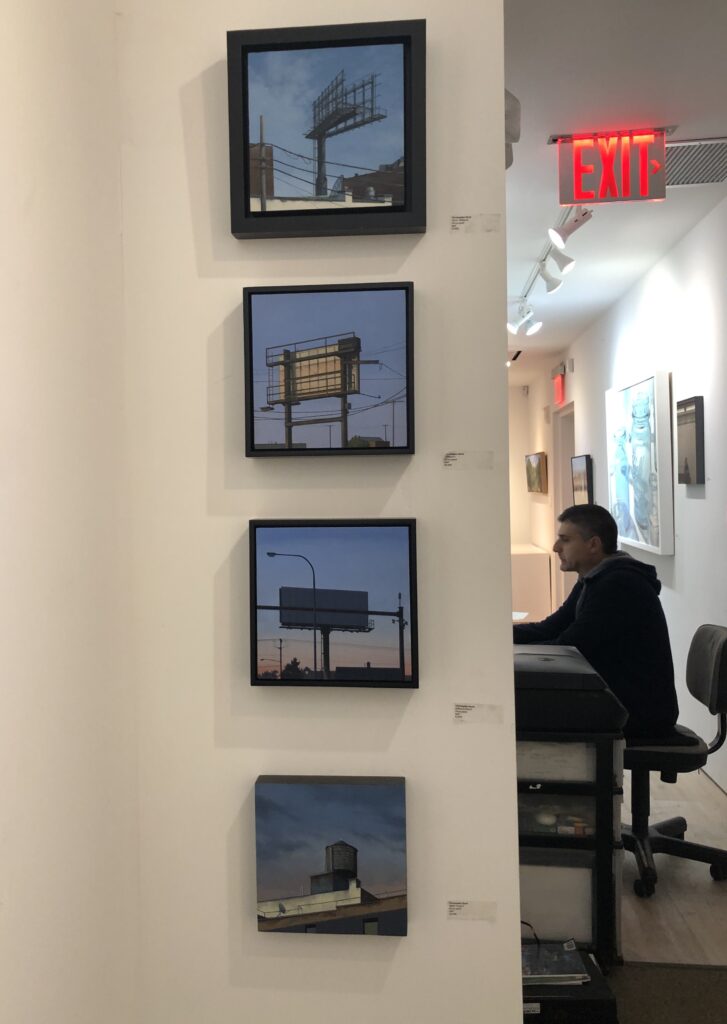The empty sky’s companions

Christopher Burke’s work hanging in back at George Billis in Chelsea. Billis is at work on the computer, at the right.
Though three other artists at George Billis Gallery in Chelsea were having solo shows in the temporary space Billis had arranged to use next door to permanent location (undergoing renovation), he still managed to have maybe eight or nine paintings by Christopher Burke hanging in the office hallway. It was the first time I’ve been able to see the actual paintings, having followed him on Instagram with great interest. There’s a subset of artists I follow on Instagram who, like Burke, are working to find ways to make images representationally persuasive but also effectively abstract in one way or another, none of them much like any of the others: Burke, Joshua Huyser, Jessica Brilli, Harriett Porter, Mark Tennant, James Neil Hollinsworth, Harry Stooshinoff, Mitchell Johnson and many others. Each of them is representational and abstract in different ways.
Burke’s work holds up no matter how close you get to it. This is not something I can say about a number of otherwise amazing painters. (Walton Ford’s paintings are breathtaking , but up close, when you get near the actual work, the marks seem expedient and for some reason, disappointing, though it’s hard to say in what way. In a discussion with my friend Rick Harrington, now living and painting in Oregon, I learned that he’d had the same reaction. The images are stunning; the paint itself not so much, though neither of us could say why it mattered in terms of the quality of what he does. And Ford would hardly care about our disappointments.) All of which is an awkward, roundabout way to say Christopher Burke’s paint holds up from any distance, something I wanted to confirm by paying a visit to Billis on my short trip to Manhattan–having been unable to get to Burke’s show here late last year. His choice of subject is crucial to what he’s doing. The images, both his carefully composed portions of roof and sky as well as his drone-like perspectives of flood plains, offer him that perfect balance between abstraction and precise realism. What’s marvelous is how much feeling Burke can invest in images so minimal and geometric. Visually, Sheeler was up to something similar in Conversation–Sky and Earth, but Burke’s images are beautiful in a more vulnerable way, partly because of their almost Japanese aura of loneliness and emptiness. These humble corners of the sky keep company with an empty, silent billboard jutting up into view, an abandoned water tower gathering shadow, the dusk soon to make everything in these paintings invisible. No one’s around. The power lines sag. Birds congregate somewhere else. Everything is rendered with absolute care and rigor and even tenderness; everything is just as it needs to be. There’s nothing lacking in the painting nor in the world Burke just barely reveals to you.
Comments are currently closed.